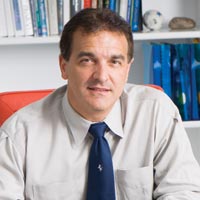Jean Botti's appointment as EADS's first chief technology officer four years ago was part of a philosophy that aimed to turn EADS from a collective of manufacturing companies into a nimbler, more innovative business, equipped to channel employees' radical thinking into projects that could breed breakthrough technologies.
"My job is to make sure we are generating new ideas to bring us the products of tomorrow," says the former executive with car parts maker Delphi, who speaks four languages. "We need to make sure that we have a consistent pipeline of technology deliverables."
|
|---|
He chairs a technology council - on which sit chief technology officers from all the divisions - that establishes best practices in R&T. He is also responsible for EADS's Innovation Works unit, an attempt to emulate the standalone Phantom Works and Skunk Works operations that have served the likes of Boeing and Lockheed Martin well.
RESEARCH CENTRES
Botti has also been key in expanding EADS's R&T footprint outside its home countries, with research centres in, among other places, Singapore, Bangalore, North America and Moscow.
EADS's R&T priorities fall into three camps: security, mobility and environment, says Botti. The company has 70 technologies aimed at protection against domestic terrorism. These include everything from explosive detection devices to security networks for public events. "Our objective is to federate them and offer them to the different units, especially defence and EADS North America," he says. "My dream is that EADS in 10 years' time is a key player in homeland security."
In terms of mobility, EADS's focus includes "everything that deals with ATM [air traffic management], better flow at airports and making life better for people within the aircraft, from IFE [in-flight entertainment] to food choice and seating preference", he says. On environment, areas being examined include "third-generation" biofuels as well as making airliners quieter and more efficient.
It some of these challenges seem a long way from EADS's traditional business of manufacturing aircraft, that is no accident. Any manufacturing or engineering industry, by its nature, is conservative and aerospace more than most. Programmes soak up billions of dollars and the cost of development, and failure, is high. Part of Botti's role is to engender a creative, free-thinking approach to technology within each division, with Innovation Works able to take an even more left-field direction.
"They need to have the right to fail," he says. "Not all our ideas will go downstream. Engineering communities in all our divisions face budgetary pressure. The more you go downstream, the less right you have to fail. That is clear."
Botti's attempt to create a more creative engineering ethos appears to be working, if numbers of patents are anything to go by. In 2004, EADS filed 521 applications worldwide. By last year that had more than doubled.
Botti: his role is to engender a creative, free-thinking approach
Source: Flight International




















